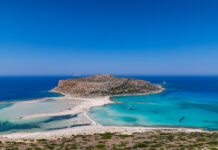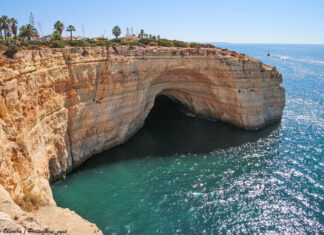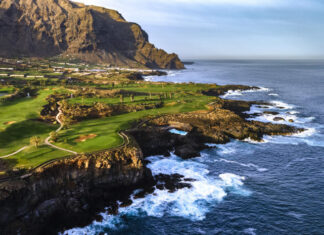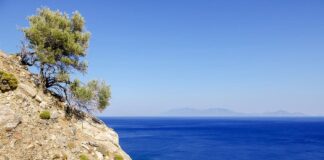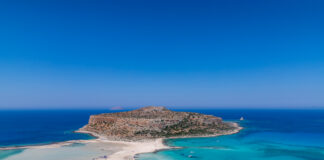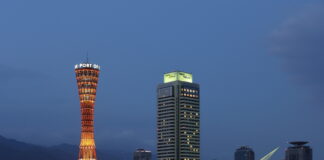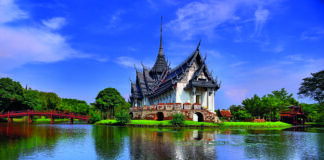Makao Island, a gem waiting to be explored, is nestled in the heart of the Pacific Ocean. This Island, often overlooked in favor of its more famous neighbors, boasts a unique blend of history, culture, and natural beauty. This guide delves into the various aspects of Makao Island, providing the traveler insight into its rich heritage, exquisite cuisine, intriguing trivia, and essential travel tips.
History: The history of Makao Island dates back over a thousand years. Initially inhabited by the Makaoans, a Polynesian tribe, the Island was discovered by Portuguese explorer João da Gama in 1521. The Makaoans initially welcomed the newcomers, but conflicts arose over land and resources. By the 17th century, the Island became a Dutch colony and then changed hands between various European powers before gaining independence in the mid-20th century. The Island's history is a must-visit in the Makao Island Museum. The exhibits, ranging from ancient artifacts to colonial memorabilia, vividly depict the Island's tumultuous past.
Culture: Makao Island's culture amalgamates its indigenous roots and colonial influences. The Makaoans' traditional way of life is still prevalent, especially in rural areas. The Makaoan language, a member of the Polynesian family, is spoken alongside Dutch and English.
Traditional Makaoan music and dance are integral to the culture. The annual Makao Festival in June showcases these art forms, with the energetic 'Hula Makao' dance being a highlight. Another notable event is the Harvest Festival in October, which celebrates the Island's agricultural heritage.
Artisanal crafts, including intricate woodcarvings and woven mats, are prominent. Visitors should explore local markets like Makao Handicraft Bazaar, where they can purchase souvenirs and interact with artisans.
Food: The cuisine of Makao Island is as diverse as its culture. The traditional Makaoan dishes primarily include seafood, taro, and coconut. 'Kalua Pig,' a dish made by cooking a whole pig in an underground oven, is a must-try. Another local favorite is 'Poke,' a raw fish salad with soy sauce and sesame oil.
However, the Dutch influence is also prominent. ''Stroopwafels' can be found all over and consist of a waffle created from two thin layers of baked dough, which encase a filling of caramel syrup.
The fusion of flavors is best experienced in street food markets like Makao Street Food Market, where vendors serve many dishes representing diverse culinary influences.

Interesting Facts:
- Makao Island is home to the Makao Parrot, a species endemic. This brightly colored bird is revered in local culture and is often seen in traditional art.
- The ancient Makaoans were expert navigators, using stars, wind, and ocean currents for navigation. They built 'Wa'a Kaulua,' double-hulled canoes capable of oceanic voyages.
- Makao Island has its currency, the 'Makao Guilder.' It was introduced during the Dutch colonial period and has remained even after independence.
- The Island is home to the 'Kapok Tree,' which has cultural significance. Its cotton-like fluff was used to make traditional garments and pillows.
- Makao Island is made up of two main islands and several smaller islets. The second-largest Island, 'Kalua,' is often called the "Mysterious Island" due to legends of hidden treasures and ancient spirits.
Travel Tips:
- When to Visit: The best time to visit Makao Island is between May and October, when the weather is dry and pleasant.
- Currency: Carrying some Makao Guilders is advisable, but US dollars are widely accepted. There are currency exchange booths at the airport and in major towns.
- Language: Learning a few basic phrases in Makaoan can be very helpful, although most people speak English or Dutch.
- Respect Local Customs: Dress modestly, especially when visiting rural areas or attending cultural events. Always ask for permission before taking photos of local people or their property.
- Stay Connected: Local SIM cards are available for purchase at the airport. It's advisable to get one to stay connected and have access to local services.
- Health and Safety: Ensure you are up to date with vaccinations. Carry a basic first-aid kit, sunscreen, and insect repellent.
- Sustainable Travel: Be a responsible traveler by minimizing plastic usage, respecting wildlife, and supporting local businesses.
- Transport: The Island has a decent network of buses and taxis. Renting a bicycle or scooter is also a popular way to explore.
- Accommodation: Book your accommodation in advance, especially during the festival season. There is a range of options, from luxury resorts to budget guesthouses.
- Adventure Activities: Makao Island offers water sports like snorkeling, diving, and kayaking. Ensure to book through reputable companies and follow safety guidelines.

In Conclusion: Makao Island is a treasure trove of rich history, vibrant culture, delectable cuisine, and natural beauty. Whether you are a history buff, a food connoisseur, an adventure junkie, or someone looking for a serene getaway, Makao Island has something for everyone. So pack your bags and get ready for an unforgettable journey to this Pacific paradise.



